From the Trenches
Ötzi’s Sartorial Splendor
By JASON URBANUS
Monday, October 17, 2016
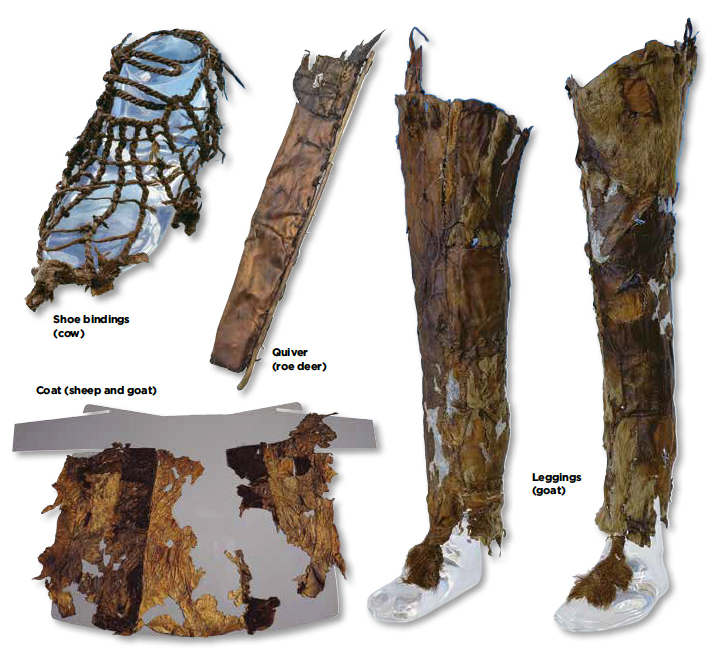
A new study has concluded that the wardrobe of the 5,300-year-old ice mummy known as Ötzi was assembled from five different animal species. Until recently, identifying the provenance of Ötzi’s surviving garments was difficult due to the degraded nature of the material. However, thanks to advances in genetic sequencing technology, a research team enriched and increased the existing DNA information so that the exact species of furs and leathers could be identified for six items: his coat, loincloth, leggings, shoe bindings, hat, and quiver. The analysis indicates that the coat (sheep and goat), loincloth (sheep), leggings (goat), and shoe bindings (cow) were made from domesticated animals, which were readily available through husbandry or trade. The fur hat (brown bear) and quiver (roe deer) were fabricated from the skins of wild species, and may have been acquired through hunting or scavenging. According to Niall O’Sullivan, researcher at the Institute for Mummies and the Iceman, Copper Age people such as Ötzi made deliberate decisions concerning a particular garment’s composition. “We can infer that ancient populations made considered choices when choosing raw material for manufacture,” he says, “[For example], the goat skin may have had a special characteristic such as flexibility that made it optimal for leggings.”
Coast over Corridor
By ZACH ZORICH
Monday, October 17, 2016
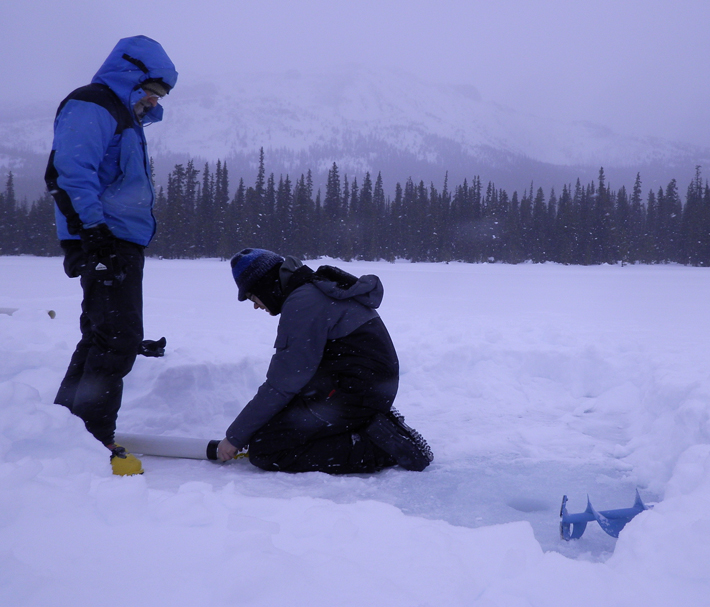 The first people to migrate into the Americas, likely more than 16,000 years ago, probably traveled down the western coast rather than along an inland route, according to an environmental study of two lakes in British Columbia, Canada. The inland path from the Bering Strait to the continental United States and South America would have been a 900-mile-long, ice-free corridor between the Cordilleran ice sheet that covered the coastal mountain ranges to the west and the Laurentide ice sheet that covered the plains to the east. The lakes in the study are located in what was once a “bottleneck” between glaciers. A multinational team of scientists examined pollen and DNA samples from sediment cores taken near the lakes, and used a technique called metagenomics to get a highly detailed picture of how the ice-free corridor ecosystem developed over time. Rather than looking for DNA from a single species, metagenomics involves sequencing every bit of DNA in a sample to better understand entire ecosystems. “The level of diversity we can uncover with DNA technology is more extensive than people have recovered in the fossil record,” says Eske Willerslev of the Center for GeoGenetics at the University of Copenhagen.
The first people to migrate into the Americas, likely more than 16,000 years ago, probably traveled down the western coast rather than along an inland route, according to an environmental study of two lakes in British Columbia, Canada. The inland path from the Bering Strait to the continental United States and South America would have been a 900-mile-long, ice-free corridor between the Cordilleran ice sheet that covered the coastal mountain ranges to the west and the Laurentide ice sheet that covered the plains to the east. The lakes in the study are located in what was once a “bottleneck” between glaciers. A multinational team of scientists examined pollen and DNA samples from sediment cores taken near the lakes, and used a technique called metagenomics to get a highly detailed picture of how the ice-free corridor ecosystem developed over time. Rather than looking for DNA from a single species, metagenomics involves sequencing every bit of DNA in a sample to better understand entire ecosystems. “The level of diversity we can uncover with DNA technology is more extensive than people have recovered in the fossil record,” says Eske Willerslev of the Center for GeoGenetics at the University of Copenhagen.
The researchers found that the corridor would not have been open before 14,700 years ago, and did not develop a stable ecosystem capable of supporting even small game until about 12,600 years ago. The metagenomic analysis revealed—among other things—traces of mammoth, bison, eagle, salmon, and beaver DNA from the ecosystem once it had matured. But this was thousands of years after the first Americans arrived, and means that they must have taken a different path. Next, Willerslev and the team hope to sample sites along the west coast of Canada and the United States to confirm their suspicions that this was the only viable route of entry.
Breaking Cahokia’s Glass Ceiling
By ERIC A. POWELL
Monday, October 17, 2016
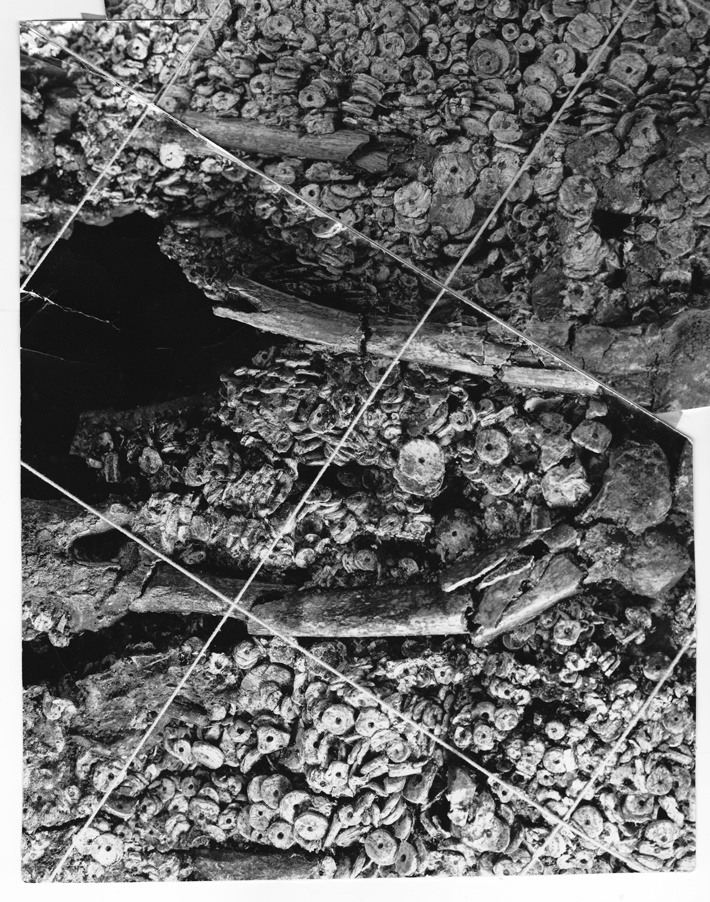 In 1967, archaeologists discovered a spectacular burial of two men accompanied by six male servants inside a mound in the city of Cahokia, which flourished near present-day St. Louis from around A.D. 1000 to 1250. The two bodies were found atop 22,000 shell beads that formed the shape of a bird, which in some Native American cultures is associated with military prowess. At the time it was thought that the burial was a kind of monument to male power, and it was assumed the men were warrior chiefs—part of a male-dominated hierarchy that controlled Cahokia.
In 1967, archaeologists discovered a spectacular burial of two men accompanied by six male servants inside a mound in the city of Cahokia, which flourished near present-day St. Louis from around A.D. 1000 to 1250. The two bodies were found atop 22,000 shell beads that formed the shape of a bird, which in some Native American cultures is associated with military prowess. At the time it was thought that the burial was a kind of monument to male power, and it was assumed the men were warrior chiefs—part of a male-dominated hierarchy that controlled Cahokia.
When bioarchaeologists led by the Illinois State Archaeological Survey’s Thomas Emerson reexamined the remains, they were astonished to find that the skeletons in the bead burial actually belonged to a man and a woman, and that 12 bodies, including those of multiple women and a child, accompanied them. “We were flabbergasted,” says Emerson. “It’s long been gospel that these were all men.” He thinks the women were high-status members of the city’s nobility and that the discovery shows that class was more important than sex at Cahokia.
Evolve and Catch Fire
By DANIEL WEISS
Monday, October 17, 2016
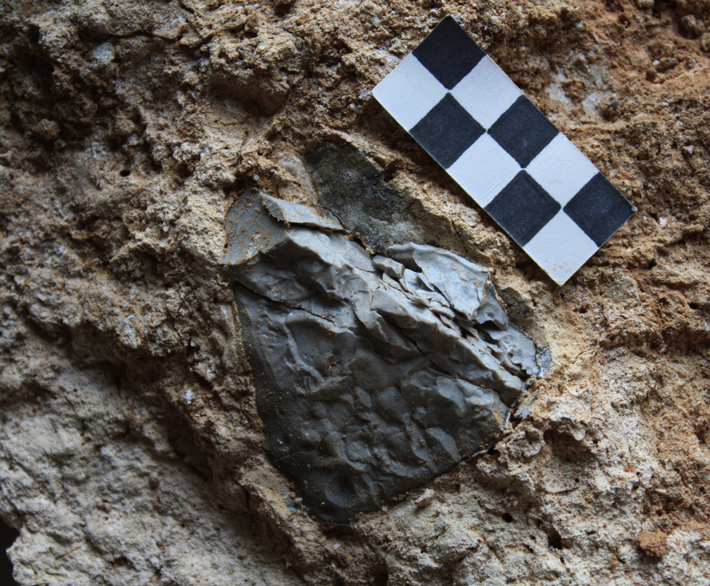 Evidence that early humans were tending fires around 800,000 years ago has been found in a cave in southeastern Spain. Excavations in Cueva Negra del Estrecho del Río Quípar have turned up hundreds of stones, stone artifacts, and animal bones, all with signs of having been subjected to fire. Dating of the site was based on evidence of a reversal of Earth’s magnetic field, known to have occurred around 780,000 years ago, in layers just above where the burned objects were found. “This is the oldest evidence of fire being tended for any site outside Africa, where fire is known from at least a million years ago,” says Michael Walker of the University of Murcia.
Evidence that early humans were tending fires around 800,000 years ago has been found in a cave in southeastern Spain. Excavations in Cueva Negra del Estrecho del Río Quípar have turned up hundreds of stones, stone artifacts, and animal bones, all with signs of having been subjected to fire. Dating of the site was based on evidence of a reversal of Earth’s magnetic field, known to have occurred around 780,000 years ago, in layers just above where the burned objects were found. “This is the oldest evidence of fire being tended for any site outside Africa, where fire is known from at least a million years ago,” says Michael Walker of the University of Murcia.
The benefits of controlled fire are clear—warmth, light, cooking—but a separate study suggests that modern humans evolved in a way that allowed them to take maximal advantage of it. The researchers found that modern humans have a genetic mutation that may have helped them tolerate intensely smoky conditions in caves. This may have offered an advantage over Neanderthals, who lacked the mutation.
Murder on the Mountain?
By JASON URBANUS
Monday, October 17, 2016
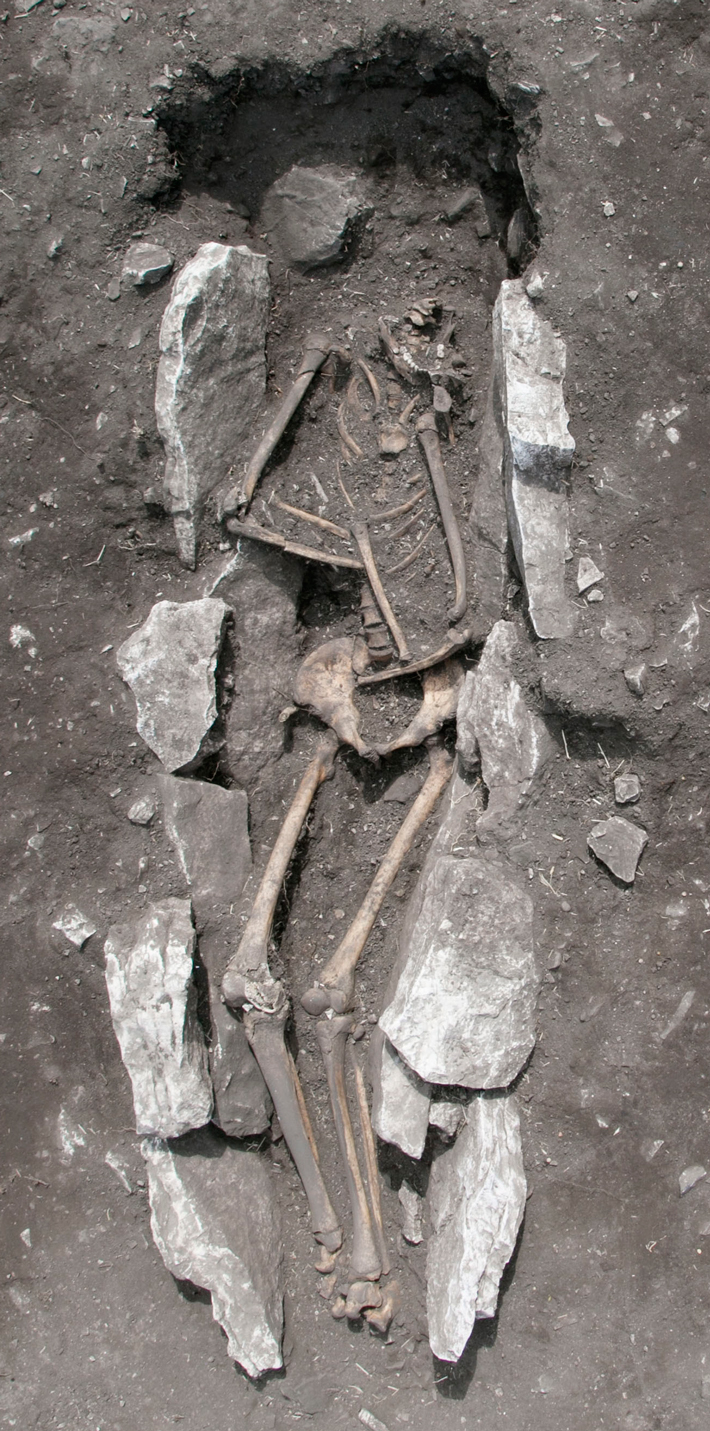 Archaeologists working near the purported birthplace of Zeus on Mt. Lykaion recently made an eerie and unexpected discovery. Over the past decade, a Greco-American team from the Mt. Lykaion Survey and Excavation Project has been investigating the Sanctuary of Zeus, one of ancient Greece’s most mysterious and sacred locales. Near the mountain’s summit there is a massive ash mound, 100 feet in diameter, that served as a sacrificial altar from the sixteenth to the fourth centuries B.C. In the past, archaeologists there had discovered tens of thousands of animal bones, mostly from sheep and goats, which were slaughtered as part of religious rituals. However, the most recent excavations also uncovered a human burial dating to the eleventh century B.C. among the animal remains. The adolescent individual was missing part of his skull, but was otherwise carefully laid out in a stone-lined grave. The discovery is intriguing because several ancient Greek writers, including Plato and Pausanias, mention human sacrifice occurring on Mt. Lykaion. According to project codirector David Gilman Romano, detailed examination of the skeleton is under way to determine whether there is any evidence of this practice. “The find is significant,” he says, “since it is the first example of human bones to be discovered at what is confirmed as a sacrificial altar to Zeus, where thousands of animal sacrifices were made in antiquity.”
Archaeologists working near the purported birthplace of Zeus on Mt. Lykaion recently made an eerie and unexpected discovery. Over the past decade, a Greco-American team from the Mt. Lykaion Survey and Excavation Project has been investigating the Sanctuary of Zeus, one of ancient Greece’s most mysterious and sacred locales. Near the mountain’s summit there is a massive ash mound, 100 feet in diameter, that served as a sacrificial altar from the sixteenth to the fourth centuries B.C. In the past, archaeologists there had discovered tens of thousands of animal bones, mostly from sheep and goats, which were slaughtered as part of religious rituals. However, the most recent excavations also uncovered a human burial dating to the eleventh century B.C. among the animal remains. The adolescent individual was missing part of his skull, but was otherwise carefully laid out in a stone-lined grave. The discovery is intriguing because several ancient Greek writers, including Plato and Pausanias, mention human sacrifice occurring on Mt. Lykaion. According to project codirector David Gilman Romano, detailed examination of the skeleton is under way to determine whether there is any evidence of this practice. “The find is significant,” he says, “since it is the first example of human bones to be discovered at what is confirmed as a sacrificial altar to Zeus, where thousands of animal sacrifices were made in antiquity.”
Advertisement
Advertisement
IN THIS ISSUE
From the Trenches
Piltdown’s Lone Forger
Off the Grid
Codex Subtext
The Rabbit Farms of Teotihuacán
Murder on the Mountain?
Breaking Cahokia’s Glass Ceiling
Evolve and Catch Fire
Coast over Corridor
Ötzi’s Sartorial Splendor
And They’re Off!
The Blood of the King
China’s Legendary Flood
Shifting Sands
Man Meets Dog, Both Meet Death
World Roundup
Maya victory monument, Neanderthal cannibals, Paleolithic smorgasbord, King Tut’s meteor dagger, and Melanesian tattooing
Artifact
A Cambridge don’s magic shoe
Advertisement

Recent Issues
-
 May/June 2024
May/June 2024
-
 March/April 2024
March/April 2024
-
 January/February 2024
January/February 2024
-
 November/December 2023
November/December 2023
-
 September/October 2023
September/October 2023
-
 July/August 2023
July/August 2023
-
 May/June 2023
May/June 2023
-
 March/April 2023
March/April 2023
-
 January/February 2023
January/February 2023
-
 November/December 2022
November/December 2022
-
 September/October 2022
September/October 2022
-
 July/August 2022
July/August 2022
-
 May/June 2022
May/June 2022
-
 March/April 2022
March/April 2022
-
 January/February 2022
January/February 2022
-
 November/December 2021
November/December 2021
-
 September/October 2021
September/October 2021
-
 July/August 2021
July/August 2021
-
 May/June 2021
May/June 2021
-
 March/April 2021
March/April 2021
-
 January/February 2021
January/February 2021
-
 November/December 2020
November/December 2020
-
 September/October 2020
September/October 2020
-
 July/August 2020
July/August 2020
-
 May/June 2020
May/June 2020
-
 March/April 2020
March/April 2020
-
 January/February 2020
January/February 2020
-
 November/December 2019
November/December 2019
-
 September/October 2019
September/October 2019
-
 July/August 2019
July/August 2019
-
 May/June 2019
May/June 2019
-
 March/April 2019
March/April 2019
-
 January/February 2019
January/February 2019
-
 November/December 2018
November/December 2018
-
 September/October 2018
September/October 2018
-
 July/August 2018
July/August 2018
-
 May/June 2018
May/June 2018
-
 March/April 2018
March/April 2018
-
 January/February 2018
January/February 2018
-
 November/December 2017
November/December 2017
-
 September/October 2017
September/October 2017
-
 July/August 2017
July/August 2017
-
 May/June 2017
May/June 2017
-
 March/April 2017
March/April 2017
-
 January/February 2017
January/February 2017
-
 November/December 2016
November/December 2016
-
 September/October 2016
September/October 2016
-
 July/August 2016
July/August 2016
-
 May/June 2016
May/June 2016
-
 March/April 2016
March/April 2016
-
 January/February 2016
January/February 2016
-
 November/December 2015
November/December 2015
-
 September/October 2015
September/October 2015
-
 July/August 2015
July/August 2015
-
 May/June 2015
May/June 2015
-
 March/April 2015
March/April 2015
-
 January/February 2015
January/February 2015
-
 November/December 2014
November/December 2014
-
 September/October 2014
September/October 2014
-
 July/August 2014
July/August 2014
-
 May/June 2014
May/June 2014
-
 March/April 2014
March/April 2014
-
 January/February 2014
January/February 2014
-
 November/December 2013
November/December 2013
-
 September/October 2013
September/October 2013
-
 July/August 2013
July/August 2013
-
 May/June 2013
May/June 2013
-
 March/April 2013
March/April 2013
-
 January/February 2013
January/February 2013
-
 November/December 2012
November/December 2012
-
 September/October 2012
September/October 2012
-
 July/August 2012
July/August 2012
-
 May/June 2012
May/June 2012
-
 March/April 2012
March/April 2012
-
 January/February 2012
January/February 2012
-
 November/December 2011
November/December 2011
-
 September/October 2011
September/October 2011
-
 July/August 2011
July/August 2011
-
 May/June 2011
May/June 2011
-
 March/April 2011
March/April 2011
-
 January/February 2011
January/February 2011
Advertisement






